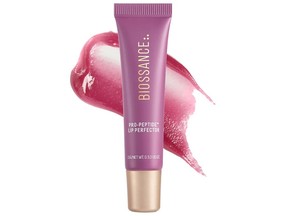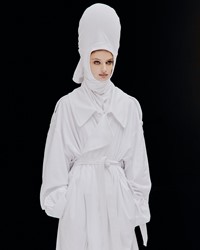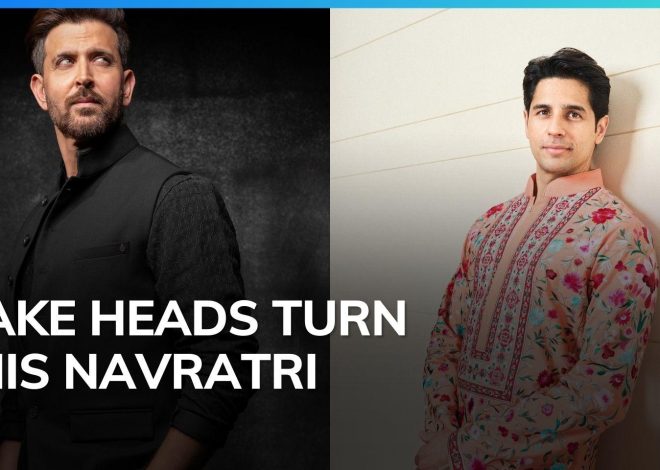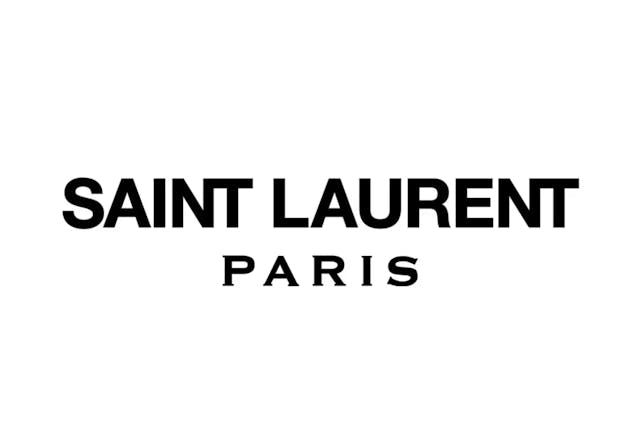
Fashion’s luxe leaders are trapped in a never-ending game of musical chairs
With the constant rotation and fleeting tenure of a chosen few creative directors, do the world’s leading fashion brands risk an insular decline? BETC’s Symonne Torpy walks us through it in style.
Another day, another creative director leaves a luxury house. But never fear, fashion fan, your favorite leader will soon be at the helm of another luxe brand.
In the world of mode, chaos is the only constant. And we love every second of it for the endless gossip, speculation, and critique it brings.
After a transcendent Margiela Spring 2024 Couture show, word was already on the street that John Galliano was on his way out, allowed to play his swan song before packing up his genius and sauntering on to another maison. But where is he off to next? What of Pierpaolo Piccioli? Who will fill the role at Chanel after the much-fêted departure of Virginie Viard? Will Maria Grazia Chiuri be next on the chopping block? Please let her be next!
But no, she’s too profitable! Dior would never…
Powered by AI
Explore frequently asked questions
The game of creative director musical chairs is symptomatic of industry pressures — the drive for more excitement, more seasons, more shows, more campaigns, more socials, more models, more buzz, more virality, more success, more money, just more! Any decline means a creative director must go, making way for a new approach. But what does any new creative director bring? Well, that all depends on who we’re talking about.
The hedi way or the highway
Hedi Slimane perfectly embodies the archetype of the creative director whose aura is bigger than the brand they lead.
During his tenure at Yves Saint Laurent, Slimane axed the “Yves”, revamped the logo, and transformed the brand into a blend of aspirational rock thrift aesthetics. Critics fumed over his disregard for YSL’s roots, maligning his first collection as an “upscale Topshop.”
Yet, he received nothing short of a standing ovation from the finance department, sending sales skyrocketing from €700m to €1.5bn.
Advertisement
Ever Hedi, he did the same thing at Celine, erasing Phoebe Philo’s minimalist Instagram and the logo’s accent. Critics called him out for presenting “Saint Laurent 2.0”. Same outrage. But same economic secret sauce; Hedi has multiplied sales by 2.5 since his arrival, to over €2bn annual revenue.
Yet, despite incredible success, the designer’s contract is up, and he’s currently locked in a prickly negotiation with LVMH that could lead to his exit. Voilà! [Editor’s note: Between submission and publishing, Michael Rider stepped into the role. Fashion sure moves fast.]
The game of musical chairs continues, and yet another brand may await Slimanification.
Is Coco rolling in her grave?
The polar opposite of Slimane, we’ve recently experienced the departure of creative caretaker director Virginie Viard at Chanel. Known as Karl Lagerfeld’s “right arm and left arm,” she was appointed by the Kaiser himself, signaling a desire for stability and continuity at the house.
What we got was an endless remix of tweed, mangled silhouettes, and a total lack of the grandiosity we had come to expect from Karl’s Grand Palais shows (the Grand Palais was also closed for renovation during this time… but my theory is it simply couldn’t bear to host Virginie’s un-visionary collections).
Advertisement
When Virginie finally stepped down this year, making room for fresh talent, the fashion world responded with such unbridled joy that Chanel turned off its Instagram comments section under any announcement posts for dignity’s sake.
Some say the real Karl Lagerfeld succession is coming, with whomever the new creative director will be, and a generational shift within the whole team.
But what would Coco say about all this?
According to Karl, she was rolling in her grave long before Virginie: “What I do Coco would have hated. The label has an image and it’s up to me to update it. I do what she never did. I had to find my mark. I had to go from what Chanel was to what it should be, could be, what it had been to something else.”
Alessandro is risen
For many Gucci fans, Alessandro Michele’s abrupt house departure was like the death of Christ himself. Alessandro’s audacious designs were only rivaled by the image of the man himself – a veritable Fashion Jesus, flowing hair, bearded, covered in rings and jewels and star power. His whimsical, maximalist, baroque style revitalized the house, raising sales from €3.5bn in 2015 to €9.6bn by 2019. And Alessandro rewrote the Gucci playbook – far from the sleek lines and sex of the Tom Ford and Frida Giannini era, which itself was an unexpected evolution for the storied Italian house.
Now, Alessandro is rising, bringing his signature to Valentino. His first collections riffed on House archives but with a rather familiar whiff of Michele, leading critics to cry, “We don’t want Valentucci.” Sorry, critics.
I’m cool with this. Long live Michele.
What about all the nobods?
Fashion’s dealing with a paradox. Critics crave fresh, new ideas. The public needs to be captivated and re-captivated, seduced and re-seduced, in an image-saturated world where even the most striking thing gets boring fast. Yet, risks are hard for fashion houses to take. According to McKinsey’s State of Fashion 2024, fashion execs continue to favor well-established designers over emerging talent. They need bankable leadership and star power to bring in guaranteed cash.
Suggested newsletters for you
Daily Briefing
Daily
Catch up on the most important stories of the day, curated by our editorial team.
Ads of the Week
Wednesday
See the best ads of the last week – all in one place.
The Drum Insider
Once a month
Learn how to pitch to our editors and get published on The Drum.
With the same few faces monopolizing leadership, diversity is hard to crack. Following Sean McGirr’s appointment at Alexander McQueen, a meme featuring Kering’s six big luxury brand creative directors (all male, all white… and eerily aesthetically similar) underscored an issue that’s no surprise to anyone.
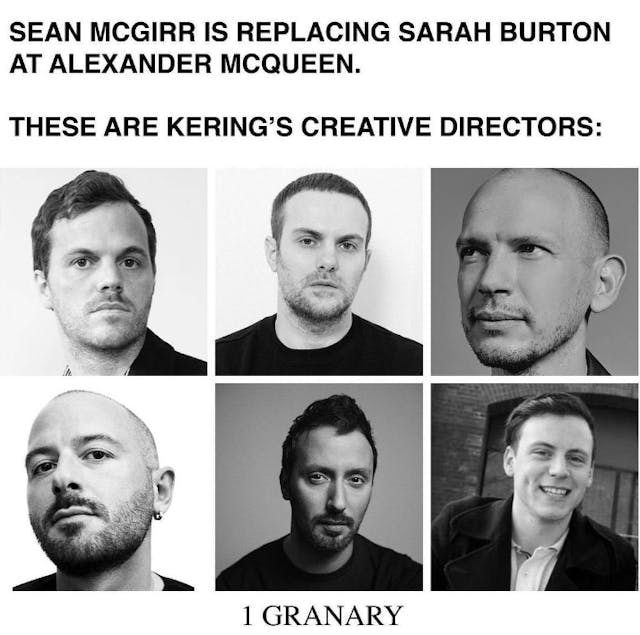
Despite women making up 70% of the fashion workforce, only 14% hold top creative positions. A 2021 BoF Insights study revealed only 13% of major fashion brands had a female creative director.
The appointment of figures like Pharrell Williams at Louis Vuitton suggests that even outside the traditional designer path, men are more likely to be trusted with the creative direction of major fashion houses. And don’t get me started on what I think about an American pop culture celebrity taking the reins of a heritage French mega-brand.
Thankfully we now have Sarah Burton to bring some clarity to the meandering Givenchy, Chemena Kamali to deliver us feminine fantasy at Chloe, and Phoebe Philo coming in hot with her own eponymous brand. More of this please.
When money is the muse
With money as their muse, luxury fashion houses no longer see clothes as the end game, as they continue their expansions into fragrance, beauty (every brand and their dog has a beauty line now), accessories, events, film media houses, galleries, museums, foundations, cinemas and more. The industry’s relentless pursuit of profit is forcing designers to balance artistry with growth.
And while many of us fashion lovers lament a past we only know from fashion documentaries and old copies of Vogue, our new reality makes sense because luxury houses are billion-dollar empires that do not simply exist for the pleasure of armchair critics like myself. Until someone figures out how to fix the whole industry, you’ll find me gossiping about the next departure and hoping Daniel Roseberry never leaves Schiaparelli.
Connect with Symonne here and read more from our Fashion & Beauty focus here.
